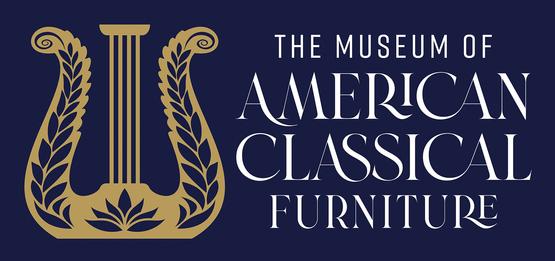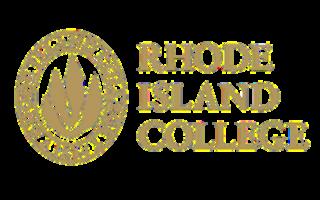

THE TIMES

CHAIR
Roberta E Gosselin
VICE CHAIR

, y y New Orleans to Rhode Island in 1840 with the hopes of securing a man’s freedom. As you might recall, last year, that letter made it back to the Crescent City to help tell the story of the profound interconnectedness of the North and the South and the human costs thereof. Now, I have the opportunity to share a small part of the story of another man, this time a Rhode Islander. For two more months, his portrait is hanging on the walls of The Met, as part of their extraordinary exhibition, Superfine: Tailoring Black Style This is how he made his way into the New York Times for the SECOND time
First, the Man: Thomas Howland
Not much is known, yet, about Thomas Howland’s early years. As he grew into adulthood, we have evidence that he sold goods at the Market House for a time before becoming a stevedore. Through this line of work, he was able to save enough money to finance his own cart and horses and run his own hauling business As an entrepreneur, he had successes and failures, some of which were publicly noted in the newspaper when he found himself in temporary debt But it was not simply for his role in business that he was known in Providence
From the Providence Journal, we can see that Thomas Howland was deeply engaged both socially and politically within Providence. He engaged in political debate and discourse and appears to have been an ardent and outspoken abolitionist and member of the Whig Party. In fact, in 1844, this put him at odds with none other than Frederick Douglass after Douglass called out the supporters of Henry Clay within the Black community, which included Howland. Rhode Island’s committee members stated their case, making it clear that these Rhode Island men had the vote and were using it strategically.
Howland was one of many men of color who supported the Whig Party, despite its stances on enslavement nationally Locally, the issue of suffrage was on the minds of many I don’t have the space in this column, nor the scholarly expertise, to go into the fascinating and complex history of male suffrage in Rhode Island, but the role of Black men advocating for their right to vote in the period of the Dorr Rebellion deserves a good deal of attention. And I hope that if this column does anything, it encourages you to dig deeper and find those experts or become one!
Winifred E Brownell, Ph D
TREASURER
Mark F. Harriman
SECRETARY
Peter J. Miniati, CFP, JD
Michael L. Baker, Jr. CPA
Charlotte Carrington-Farmer, Ph.D.
JP Couture, AIA
Frank J. Faltus, MD
Denise P. Gallo, Ph.D.
Laura Kenerson
Lori J. Lousararian, Esq.
Frank Mauran IV
Peter J. Rossi
Alicia J Samolis, JD
Robert H Sloan, Jr
Luther W Spoehr, Ph D
Lane Talbot Sparkman
Stanley Weiss
Paul R Williams
EX OFFICIO
Erin Stevenson
EXECUTIVE DIRECTOR
C Morgan Grefe, Ph D
Sarah Jane Carr, Senior Director for Advancement & Public Engagement
Anne Conway, Senior Director for the Museum of Work & Culture
Charmyne Goodfellow, Senior Director for Finance & Administration
Richard J. Ring, Senior Director for Museum & Museum Collections
Many sources shed light on the actions of the men who advocated for their rights, and one of the most interesting is the Autobiography of William J Brown Near the end of his memoir, he shares the story of the Dorr Rebellion from his perspective. He tells his readers about the group of nearly 200 Black men who assembled, ready to elect officers and fight (if need be) to protect the state against those rising in rebellion. He recalled that when the group met to elect officers, three men wanted to be elected leader, and, “One was Thomas Howland, a stevedore, and a man of some influence and considerable money, but very little education.” Clearly, by 1842, Howland was well known, well-positioned, and committed to uplifting the political power of the Black community in Providence.

Howland also showed commitment to his community through his work to commemorate and celebrate the anniversary of emancipation in the British West Indies on August 1, 1834. While these celebrations are not broadly remembered in the annals of history, for the Black community of Providence in the middle of the 19th century, these events were opportunities to gather and celebrate the spread of freedom around the globe, to restate their fervent dedication to abolition in the United States, and to make it known that until the U.S. was free, they would mark liberty wherever it occurred.
It’s no surprise that Howland’s commitment to his community and his country would lead him to a desire for elected office Although the official records of the 1857 warden elections are scant to non-existent, an 1875 lecture at the Rhode Island Historical Society by John Howland (no known relation) helps shed some light on how Howland became the first person of African heritage elected to public office in the State:
It had been the custom to elect the warden and clerk on the morning of the day of the city election in May, just previous to the opening of the polls, by the voters then present, vivavoce, or by a show of hands. The election law changed this practice, and required these officers to be elected by ballot, throughout the day...on the 1st Wednesday of April.
…The 3rd ward was largely republican, and the democrats in their primary meeting to elect delegates to the convention for the nomination of Governor etc., made no nomination for Warden and clerk, as they had nothing against the occupants of those offices but their politics, and there was no chance of success in making opposition to them The republicans held their primary meeting also, and made their selection of delegates to their convention, but it did not occur to them to nominate for warden & clerk, as they should have done at that meeting.
On the morning of election day, some old time voter, oblivious to the election law, just previous to the opening of the polls, moved that Roger W. Potter, as warden, and Thos. A Millett as clerk–then the holders of these offices– be reelected to these offices for the year ensuing. The motion was adopted, viva-voce, and it occurred to no one–not many being present that the law of election for those offices had been changed. The voting went on throughout the day, and until near the time when the polls were to close, when it came into the mind of a bright young democrat, {Illegible} Davies (now dead) that the vote of the republicans in the morning was a nullity, and did not elect a warden & clerk Without saying any thing, he wrote a few ballots with the names of Thomas Howland for Warden and Zechariah R. Tucker for clerk, and succeeded in getting some of his friends, who came in at the last minutes, to inclose the tickets on their envelopes and deposit them in the ballot box. He thus secured the deposit of five of these ballots, without having excited in the other party any suspicion of what he was about.
Thomas Howland and His Portrait, Read to the RIHS by John A Howland, 1875
One would hope that this would be why the nation learned about Mr. Howland–a man dedicated to the betterment of this nation, had become the first man of African heritage to be elected to office in Rhode Island. But, unfortunately, this is not how he gained fame.
In the same year that he was elected to office, Thomas Howland applied for his passport. He did not receive it, and The Providence Journal reported on the response sent. The story was picked up by The New York Times, where it ran on October 23, 1857 Howland had applied through a Providence notary, Mr Martin, who received the following reply: “Mr Martin must certainly be aware that passports are not issued to persons of African extraction. Such persons are not deemed citizens of the United States.”
For many of you history buffs, I’m sure you have already surmised why this outrage occurred. This denial came in the wake of the Dred Scott decision of March 6, 1857. Because of this Supreme Court decision, Thomas Howland, the elected warden of Providence’s Third Ward in 1857, the first Black elected official in the city, in the state, was told by a representative of the U.S. government that he was not a U.S. citizen.
The New York Times also reported that Howland was leaving the country with his wife and daughter, who intended to “ engage in teaching” in Liberia, a task for which she had qualified herself in Providence’s public schools. In 1857, the Howlands left Providence for life in Africa, where Mr. Howland became a sugar manufacturer. Sadly, Mrs. Howland and their daughter died just a few months after their arrival.
Mr. Howland, however, stayed in Liberia and married just a few months after his wife and daughter’s passing, and moved to his new wife’s large farm outside of the capital. We know this because Howland stayed in touch with his fellow Rhode Islanders through letters in The Providence Journal. These letters detailed his successes on the farm–what he was growing, as well as what he hoped to grow if his former countrymen would send him seeds (In the 21st century, we can learn a bit more about Howland’s life in Liberia via the scholars who have included him in economic histories of the African nation ) He was so well remembered, of course, that he was the topic of a talk at the RIHS just 18 years after his departure–but that lecture also had much to do with the portrait that remained in Rhode Island.
It is this portrait, by an artist named John Blanchard, of whom very little is known, that has helped to cement Howland in our state, and I believe, our national history. His remarkable countenance has graced the RIHS collections since the late 19th century, and every year, it seems, he receives more of the attention he deserves.
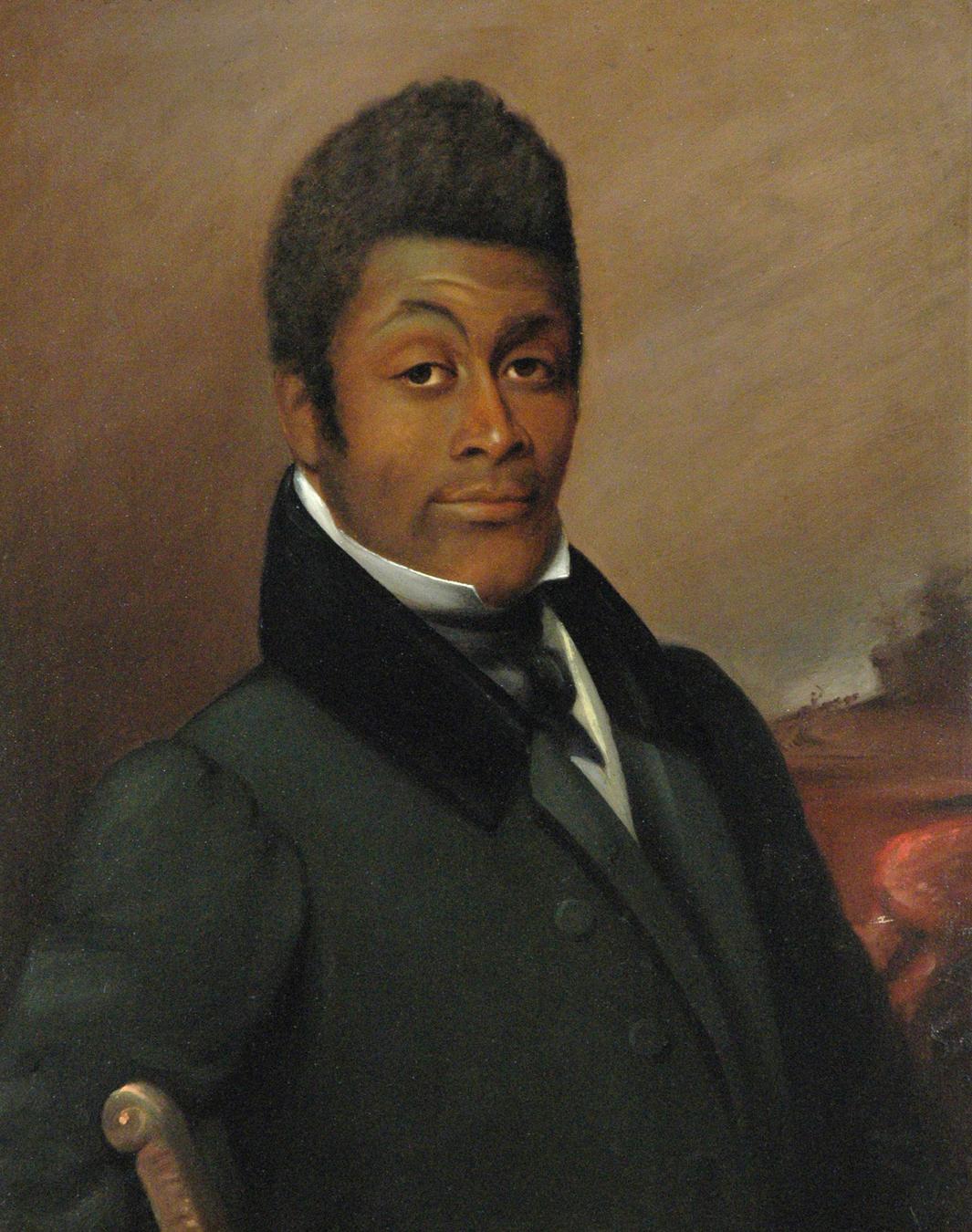
Mr. Howland goes to New York
It is, of course, quite possible that Howland traveled to New York City in his lifetime. He and his family traveled to Liberia on the ship Mary Caroline Stevens out of Maryland on a voyage chartered by the Colonization Society. Perhaps they stopped in NYC along the way, but likely, we will never know.
We were eager, maybe it's fair to say giddy, when we were asked by The Metropolitan Museum of Art’s team if Mr. Howland’s portrait could be part of their famed, annual fashion exhibition in 2025. We could think of no better representation of a man of style, standing, and savvy in the 19th century.
Portrait of Thomas Howland
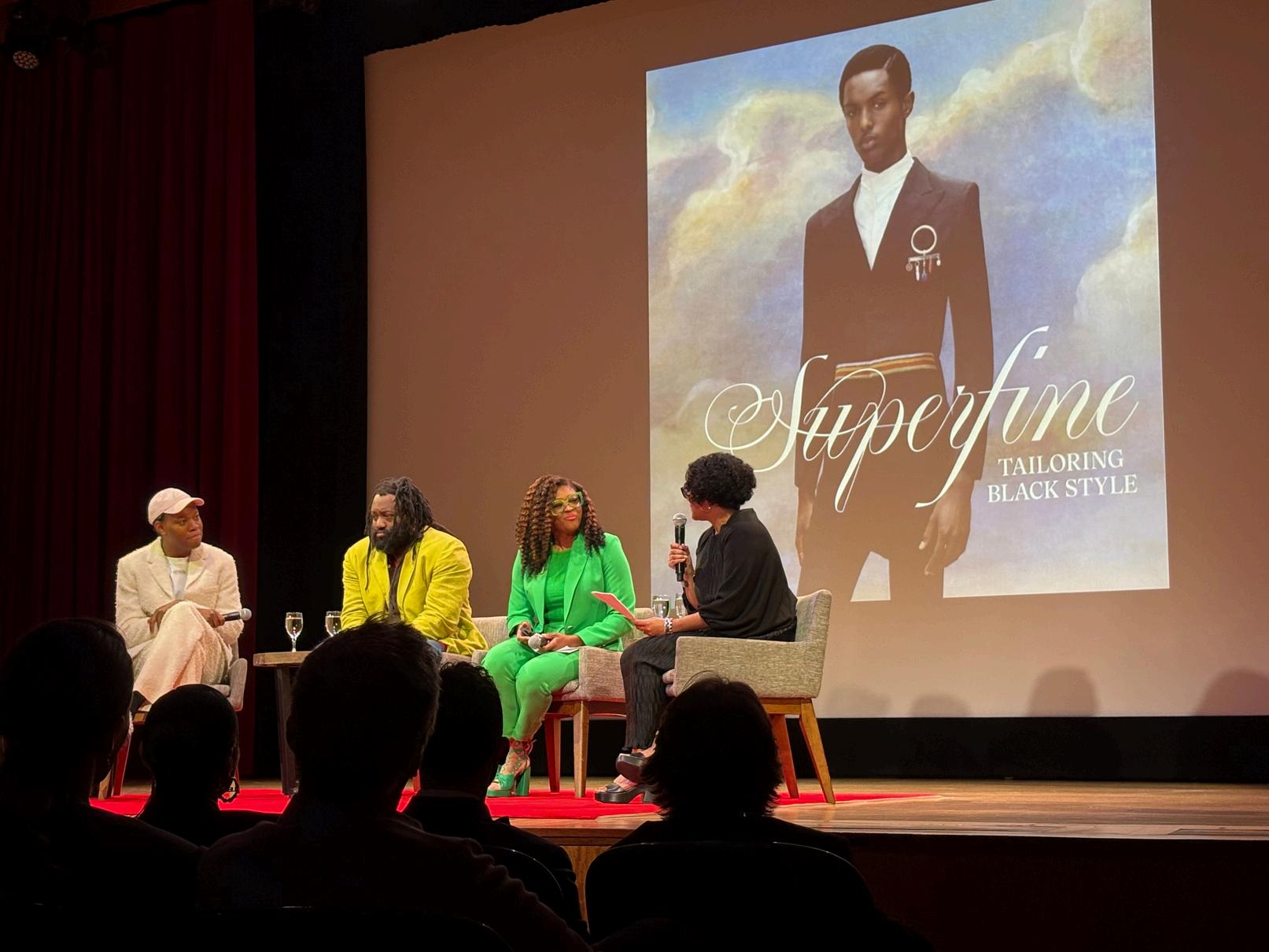
This marvelous exhibition deserves, and has received, far more attention than I can give it here In short, it spans centuries and the globe. Everything displayed is extraordinary, not only for its beauty, but also for the simple fact that it survives, such as the clothes, comb, and sunglasses of Frederick Douglass and the riding boots of Pere Dumas. At every turn, I was dumbstruck–often overwhelmed to be in the presence of the garments that warmed, protected, distinguished, and decorated these men.
And there was Mr. Howland, with hundreds of men and women that night alone, reading his story, admiring his image, and posing for selfies with this striking man A man now featured as part of the story of “Freedom” in one of the most significant museums in the world, after having left this nation more than 150 years ago when his government informed him that he was not considered a citizen of the country he helped build.
We are so glad that more of the world is learning about Mr. Howland, and I hope against hope that you will go visit him on those hallowed walls of The Met. But, please know that if you cannot see him there, when he returns home, you can welcome him back to Rhode Island.
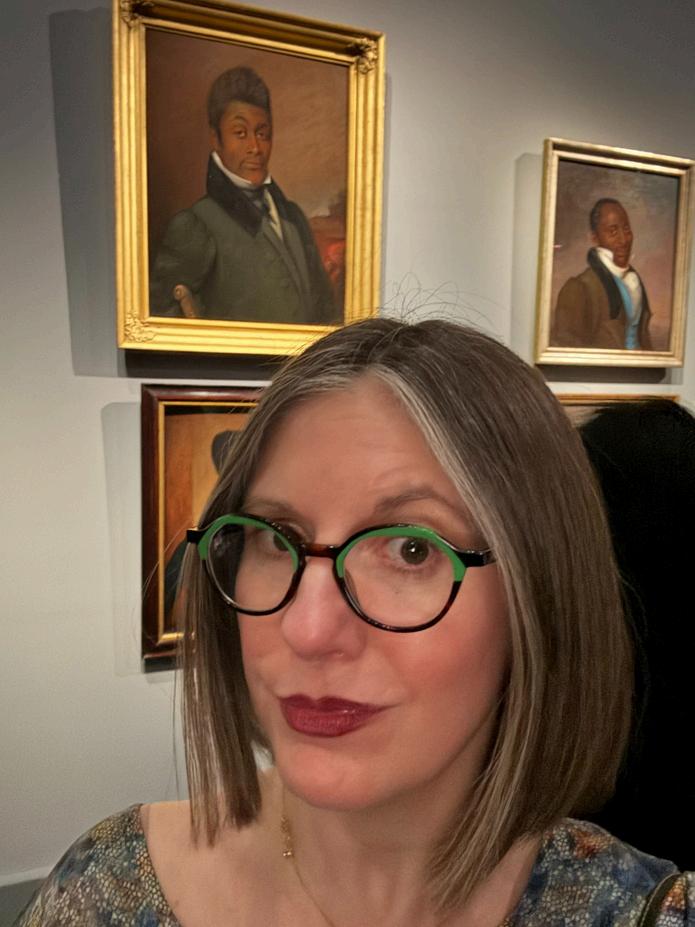
Black Suffrage and the Dorr Rebellion
Discover other travellers on Howland’s ship to Liberia
Morgan presenting her best Thomas Howland Impression
Panel at the Superfine exhibit opening
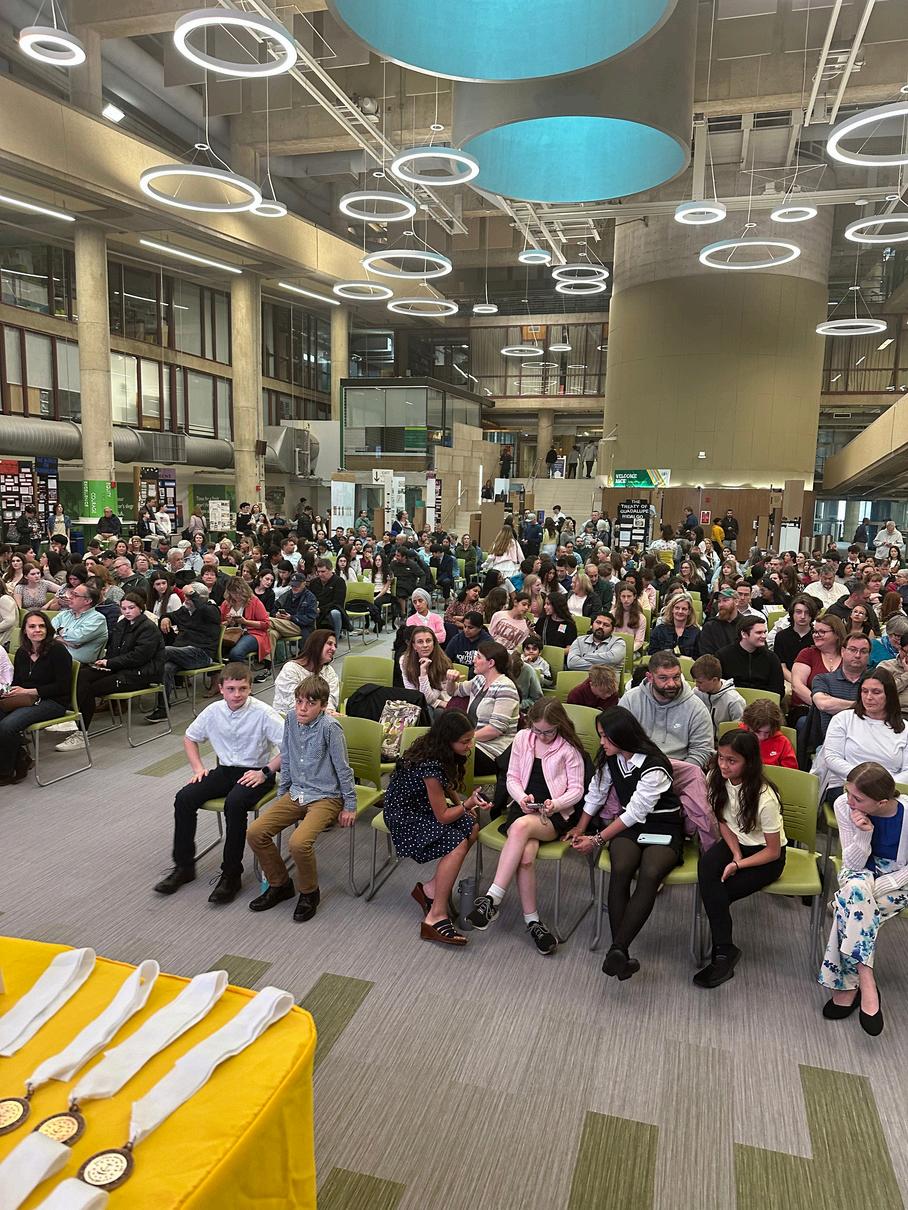
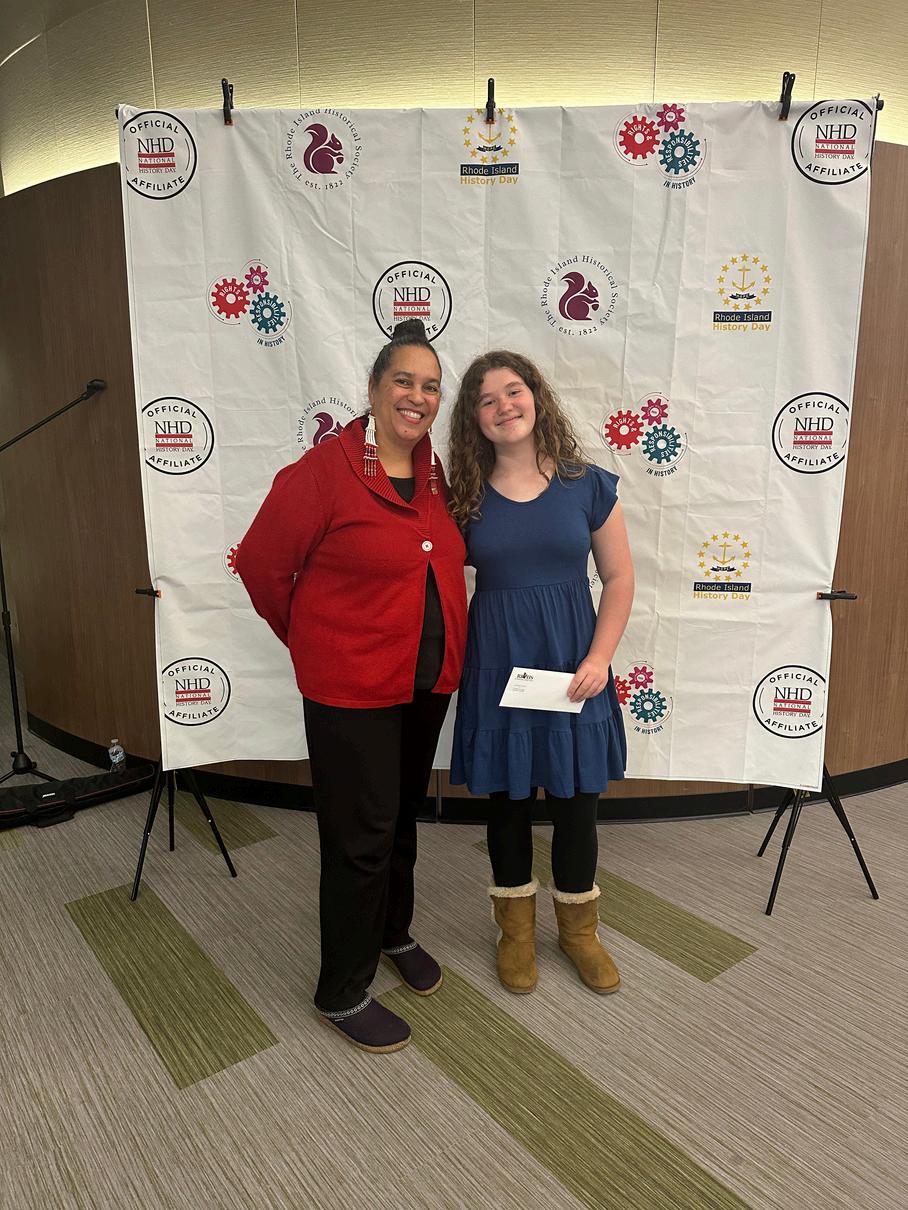


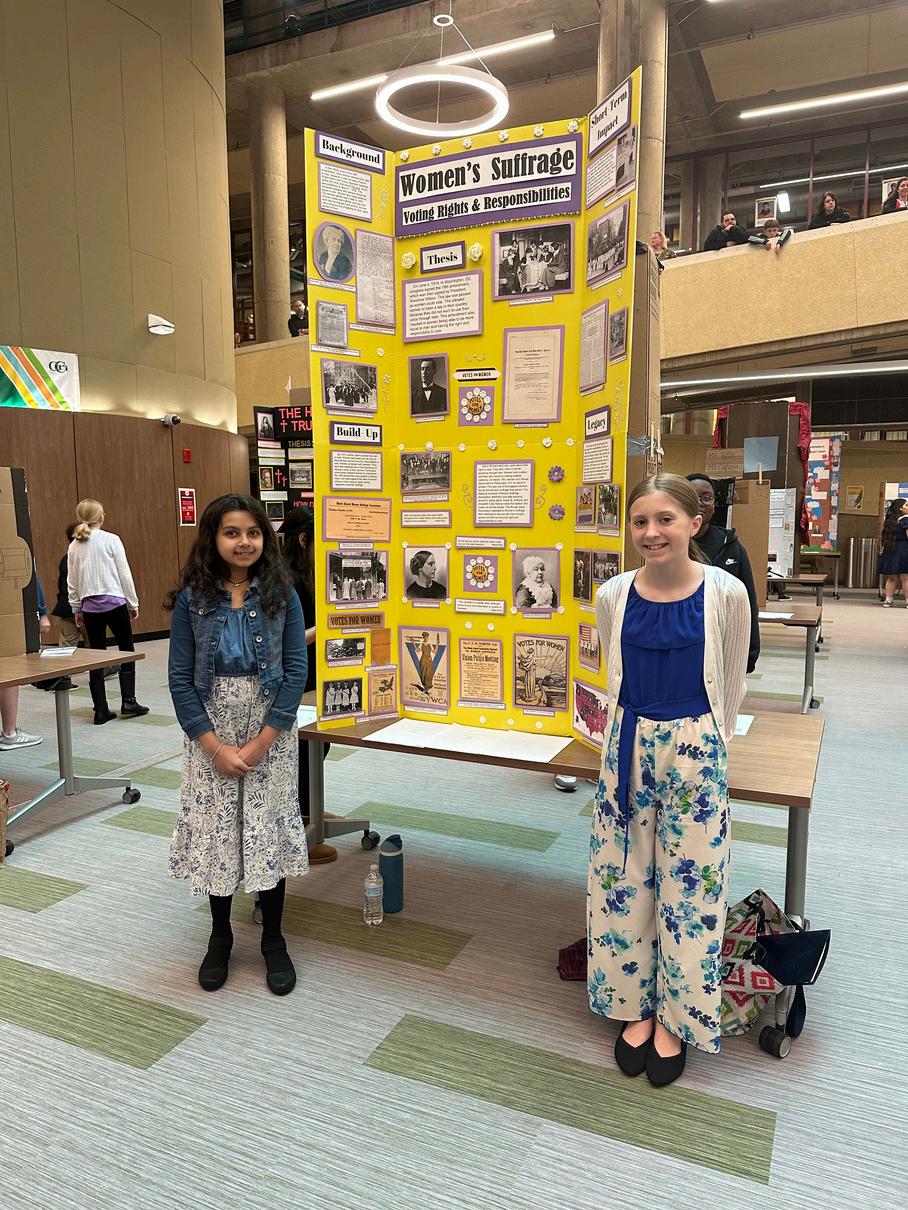

The 2025 Rhode Island History Day Contest, presented by Amica Insurance, was held on Saturday, April 26th at the CCRI Knight Campus in Warwick. It was a wonderful day for all of the students, parents, teachers, and judges who came to celebrate with us!
For over 50 years, National History Day has prepared students with the skills to succeed in the classroom and beyond. Each year, more than half a million students in grades 6-12 are guided through a process of historical research, analysis, argumentation, and creative expression Harnessing the effectiveness of project-based learning, NHD asks students to conduct primary and secondary-source research on a historical topic of their choosing and present their work as an individual or group project in the form of a documentary film, exhibit, paper, performance, or website.
As the sponsor of National History Day in Rhode Island, the Rhode Island Historical Society supports students and teachers throughout the NHD journey, which culminates in the day-long Rhode History Day state contest.
This year, more than 180 students representing over half of all Rhode Island cities and towns presented 108 projects focused on this year’s theme: Rights and Responsibilities The top two projects in each division and category were invited to represent Rhode Island at the 2025 National History Day contest in College Park, Maryland.
In addition, local organizations and nonprofits sponsored 14 Special Awards for the statewide contest, awarding over $3,500 in cash prizes to students whose projects reflected excellence in particular topics or research methods. These organizations included Rhode Island PBS, the Junior League of Rhode Island, Fort Adams Trust, and many more (Find the full list of awards and winners here )
The educators who make this program possible were also recognized, including Christine Costa
from Tiverton Middle School and Patricia Shawcross Buffington from Toll Gate High School, who received the Rhode Island History Day Teacher of the Year Award in the Junior and Senior Division, respectively. This award showcases their commitment to excellence in teaching the History Day curriculum in their classrooms and schools.
Following the statewide contest, forty-one Rhode Island middle and high school students from 13 schools competed with nearly 3,000 students from all 50 states and the District of Columbia, as well as American schools in Guam, American Samoa, China, and Singapore, at the National Contest hosted at the University of Maryland (College Park) from June 8-11.
Rhode Island students had the chance to find camaraderie and trade pins with their fellow competitors, meet with Senator Sheldon Whitehouse and Representative Gabe Amo, and celebrate their achievements.
Although RI had no National award winners this year, the two “outstanding affiliate” winners for Rhode Island were finalists in their respective categories, both placing in the top ten nationally Those students were Donghyun Kang with the paper “Red Scare, White Fear, and Blue Badges: The Palmer Raids and the Erosion of American Civil Liberties,” and Gabriel Sumilang with the documentary “The Right to Do Wrong.”
The RIHS is already gearing up for the 2026 contest, which will be held at Brown University on Saturday, March 26, and will focus on the theme Revolution, Reaction, and Reform in History.
PECKHAM’S CITY: PRESERVING PROVIDENCE ON THE PAGE
by Richard Ring, Senior Director for Library & Museum Collections

Each year, the Rhode Island Historical Society chooses a theme that guides our programs, social media content, some of our collecting, and which collection pieces we display This year’s theme is Homegrown RI, which explores Rhode Island's natural world and how we have shaped our state's landscapes by creating spaces for communities to gather, celebrate, live, and remember. In honor of this theme, we have chosen selections from the Peckham Collection to display in the Aldrich House’s changing gallery through December 2025.
Edward Lewis Peckham (1812–1889) was a Providence-born son of Thomas Peckham Jr. and Sarah Wardwell. His father was Deputy Collector (customs) of the Port of Providence for 30 years, and though Edward demonstrated artistic talent, his father opposed his taking up the pen and brush professionally Edward was thus self-taught, pursuing art on the side while clerking in banks and mercantile establishments, and leading a bachelor’s life.
Most of Peckham’s sketches and watercolors of local landscapes date from 1829 through 1843 and show a semi-rural maritime community. Like many nineteenth-century artists and writers, he lamented the passing of the stagecoach era, the loss of intimacy with the shoreline, and the arrival of the railroad. The forces of industrial progress changed the face of the city, but Peckham preserved it on paper, documenting the Providence he likely viewed often from the family residence at the corner of Benefit and Arnold Streets, overlooking the harbor
In 1912, several of these drawings were published in The Journal of American History in an article by Edward Peckham’s nephew, Stephen Farnum Peckham (1836–1918), an associate editor and notable chemist What follows are a few excerpts from the article about Providence in Edward Peckham’s time.
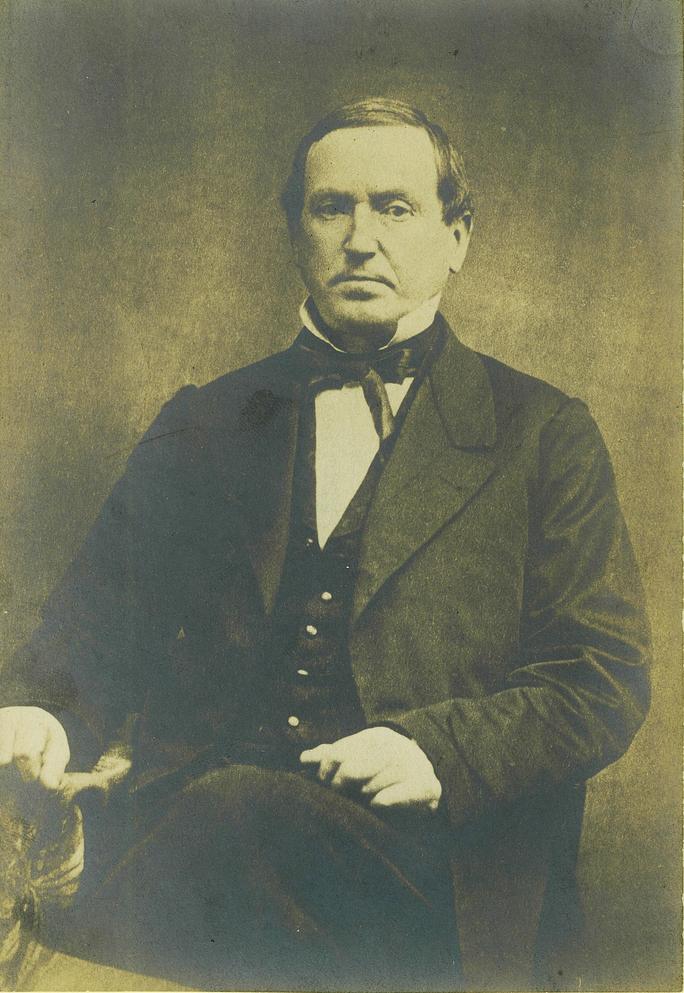
Portrait of Peckham from the RIHS Portrait Collection.
His soul was in art, and, as early as 1829, when seventeen years old, he made drawings in pencil of Roger Williams’ Rock [Slate Rock], and other historic scenes in and around the Providence of that date . . . Fearing that the colors would fade, in the closing years of his life he re-drew, with exquisite care, nearly the whole series and bound them into a book. He left all of these drawings that he preserved to the Rhode Island Historical Society.
Providence, as originally laid out, was built along a street which extended from Mile End Cove, near Fox Point, along the Harbor and the Cove, up Constitution Hill, and out into the country towards Pawtucket After a time, Benefit Street was constructed, parallel with the Town Street, which was named North and South Main Street I can remember when Brook Street followed an open brook, and when Hope Street had few houses on it. At the time of the sketches, most of the region east of Thayer Street was embraced in Governor Fenner’s farm, while the recent construction of the Asylum wall enclosed the building and grounds of the Dexter Asylum like a fortress. East of the Asylum wall was the farm of Moses Brown, with the woods of Cat Swamp to the north.
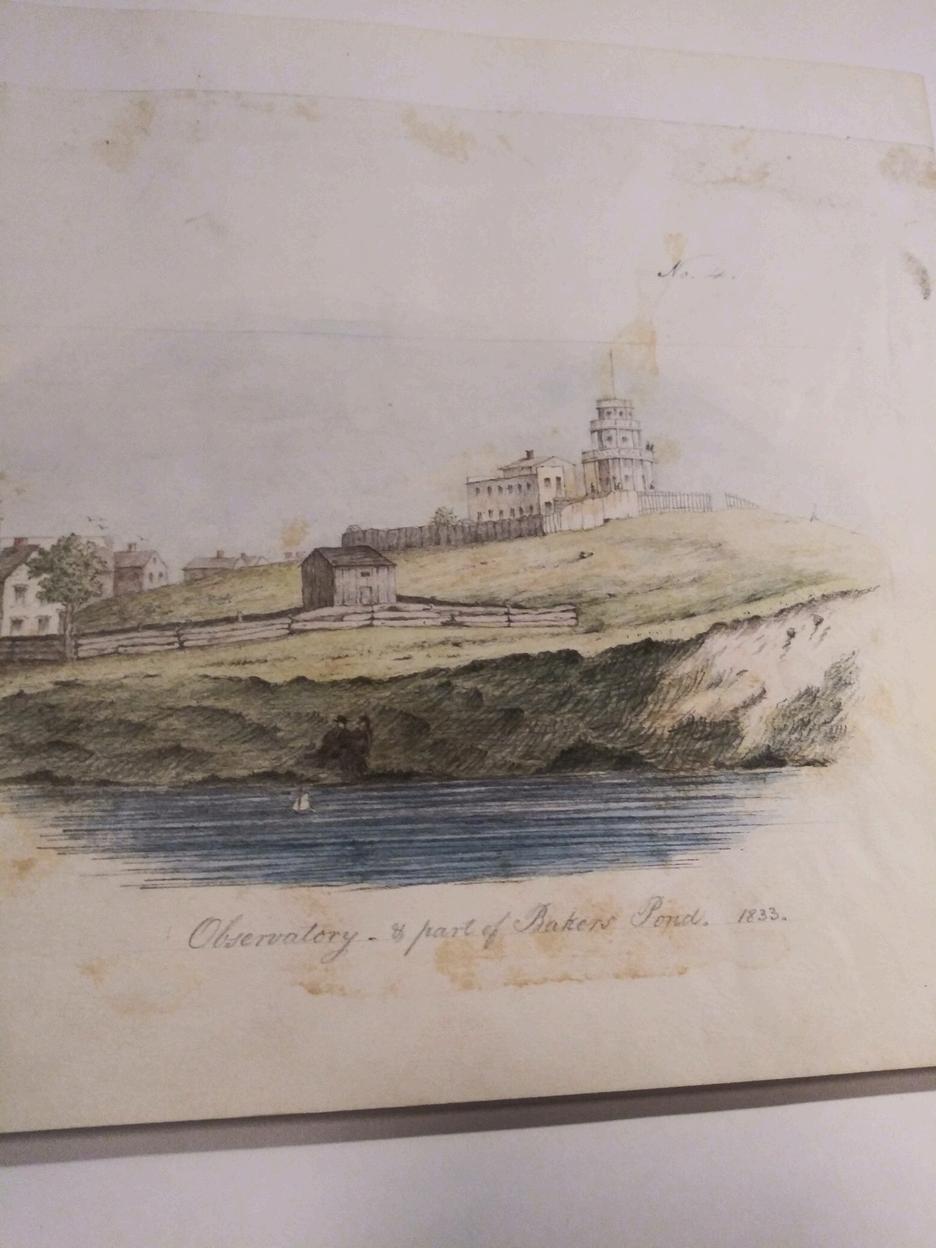
At the period from which my uncle’s earliest sketches date, 1829, Providence had a population of less than seventeen thousand Providence was governed by Town Meetings, with all the advantages and disadvantages of an overgrown village Canal Street had no buildings on the west side, but was preserved by an embankment from the inroads of the waters of the Cove . . . Many boys, including my uncle, Edward, learned to sail catboats on the Cove before venturing down the Bay . . . The Cove has practically disappeared.
In some of Peckham’s art, smoke stacks pepper the vista, indicating the transition from the maritime to the industrial. Providence has, of course, continued to change since his passing in 1889. A maritime economy and working factories are now unfamiliar to contemporary Providence residents. Like any true Rhode Islander, Peckham was obsessed with documenting the fading world that he knew, leaving his work to ensure that future generations will know what used to be here.
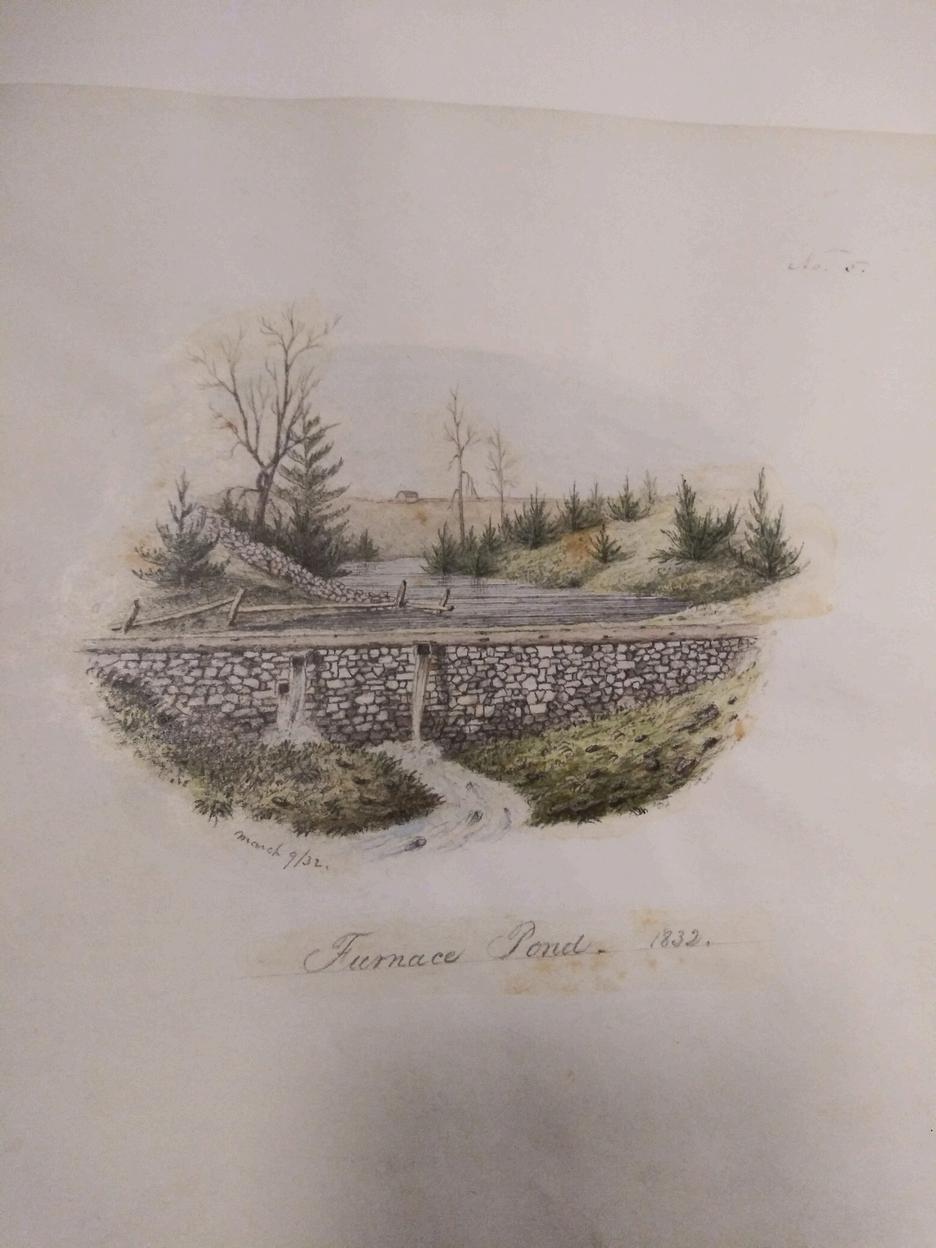
Observatory & Part of Bakers Pond (1833), G 1154 B1 F4, Peckham Collection
Read the full article, A Painter of Old Providence
Discover Peckham’s work detailing
Furnace Pond (1833) Peckham Collection
A BEHIND-THE-SCENES LOOK AT THE MUSEUM OF WORK & CULTURE’S RENOVATION
by Anne Conway, Senior Director for the Museum of Work & Culture
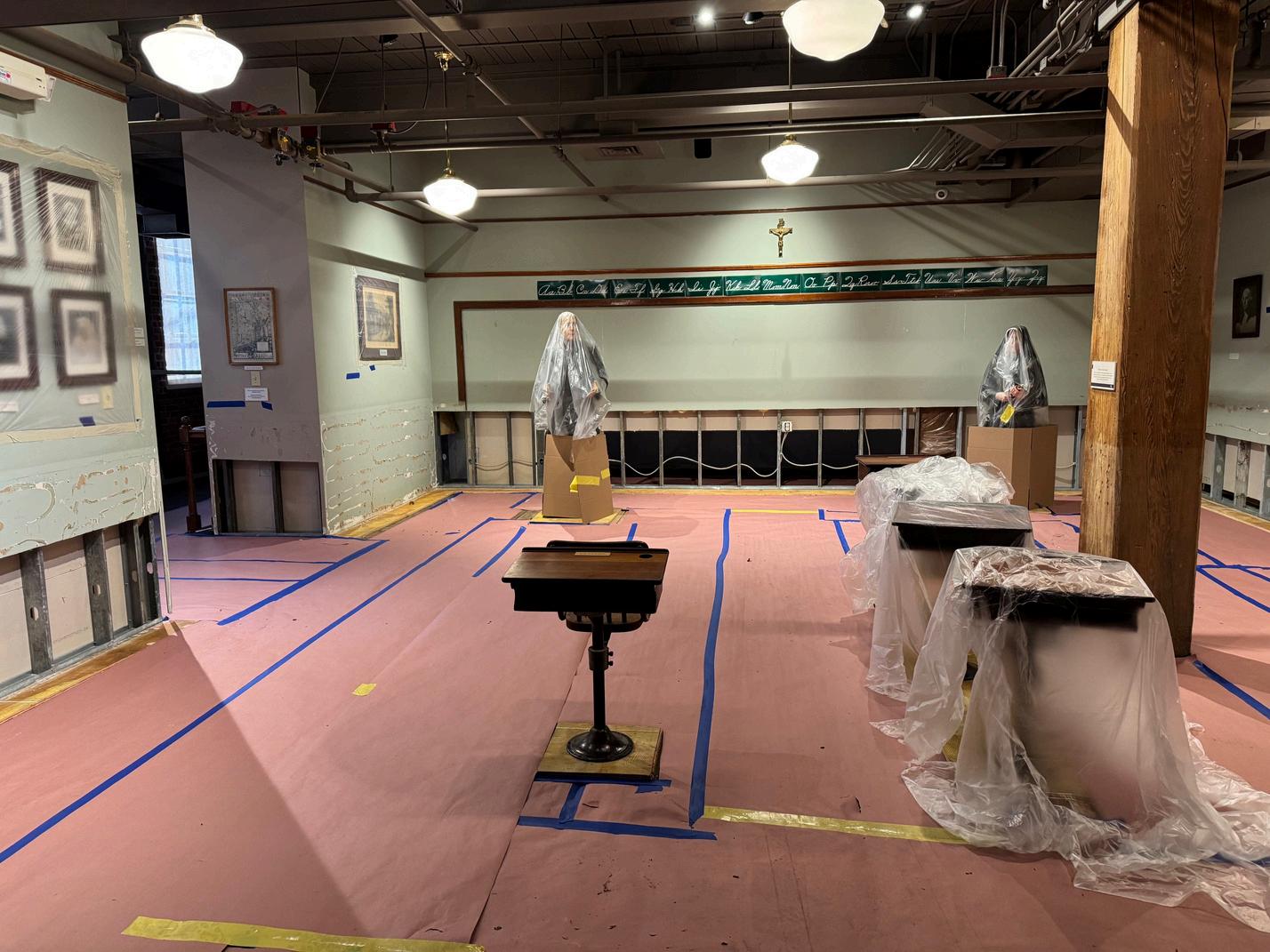
y g saw water pouring down from the ceiling above the Treasury of Life Exhibit. The water was coming from a sprinkler head in the second-floor Classroom exhibit.
The RIHS and the City of Woonsocket sprang into action to stop the water flow, assess the damage to the museum, and begin cleaning up Thankfully, the recent technological upgrades to the museum were spared, and there was no damage to the building’s structural integrity, so most of the extensive work that needed to be done was on surfaces, like floors and walls. A restoration plan was made, and with all hands on deck, the fourteen-week-long journey began.
After getting over the initial shock of having to close the museum for three months, the museum team’s first order of action was to carefully study the busy calendar ahead and find ways to meet our commitments to schools, visitors, and supporters while being closed. We knew we had to think of strategic and creative ways to continue to operate the museum After all, we had been successful with our remote programs during the pandemic, so why not put what we learned then back into practice?
The Valley Talk Lecture Series had just begun With the help of the Advancement and Public Engagement team, we were able to reach out to our audience and inform everyone that the series would now take place on Zoom. Two hundred and thirty people attended the next three lectures, joining us from twenty-six states and two Canadian provinces. One of our longtime partners, the American French Genealogical Society, kindly hosted our last Valley Talk on March 23rd, attended by 77 people both in-person and on Zoom.
But what about all the field trips booked from January through April, including our annual Woonsocket Proud program? This RI State Senate grant-funded program, which brings in about twenty-five 5th-grade classes from the Woonsocket School District was set to start

The Gallery of Mill Owners during Renovations
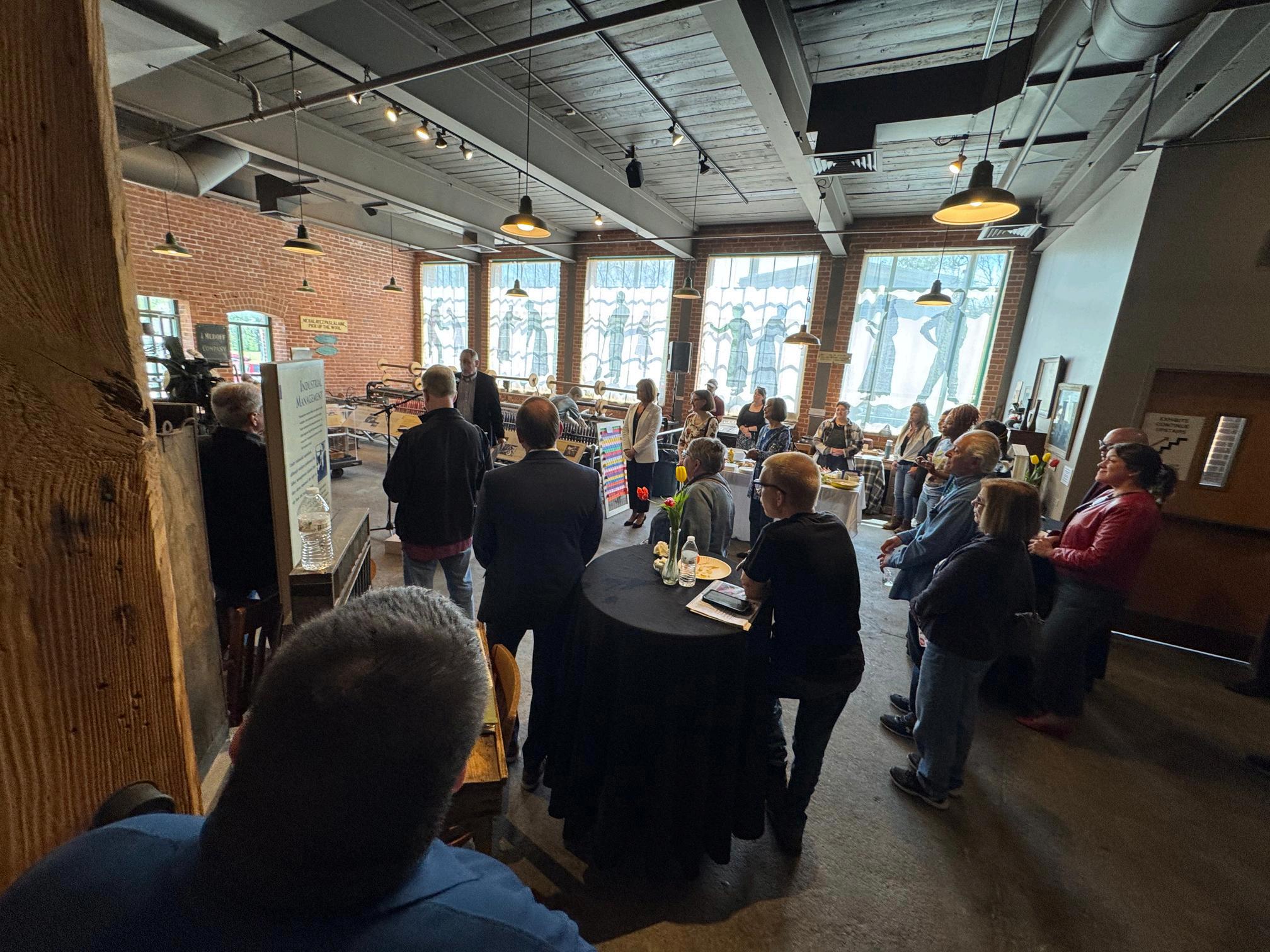
To reschedule such a large number of field trips for the spring was not a possibility since many other reservations were already on the books for May and June. What about visiting the students in their classrooms? Rachael Guadagni, then the Museum Family and Youth Education Coordinator, contacted the school department with the idea, and the superintendent agreed. Ready with a PowerPoint presentation, an “immigrant suitcase” activity, and an interactive project, Rachael, along with museum docents, interacted with every 5th-grade class, leaving each student with a free family pass to visit the museum once it re-opened “We found that students were often more attentive and had more engaging questions in their own familiar classroom than they did while out in public at the museum,” says Guadagni.
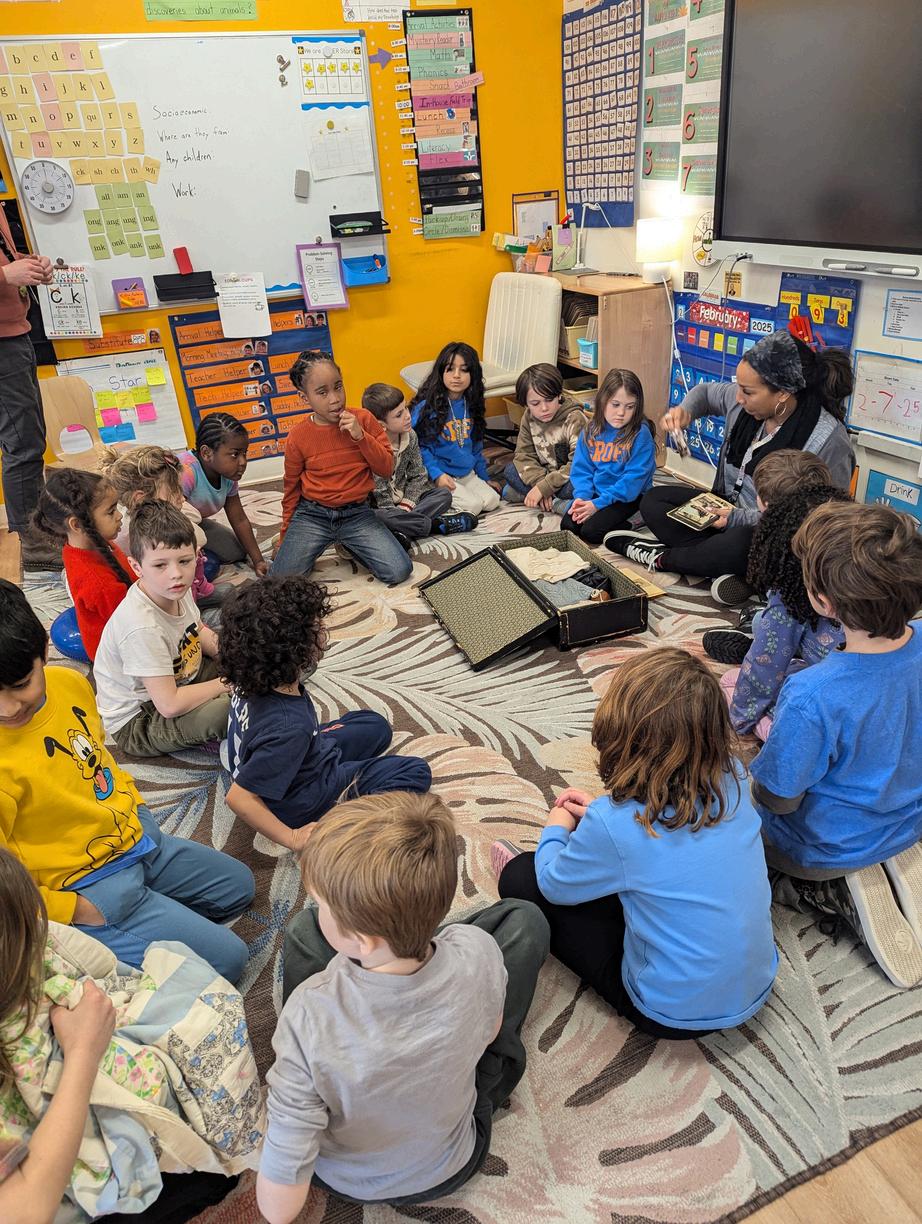
For the general public, Beatrice Duchastel de Montrouge, the Public Program Coordinator, led weekly museum tours on Zoom, focusing on different topics. She also visited area nursing homes as part of the Museum on the Road program.
And then it was March - Francophonie Month! Where were we going to hold all our programs? With many sponsors already committed and so much planning already underway, cancelling was not an option. Luckily, we did not have to look too far for Ciné-Québec; holding the event at the Aldrich House was a natural fit for an evening of wine, cheese, and a movie The perfect location was also found for All-ThingsFrench Trivia. Our friends at Ciro’s Tavern, an English-style eatery in Woonsocket, graciously let us use a large dining area for our guests to gather and enjoy food and drinks while engaging in the game.
Our signature event, A Salute to Spring -Bonjour Printemps was held at the Blackstone River Theatre in Cumberland. The theatre was a wonderful setting for our sold-out event. Guests enjoyed the music of Grosse Isle, a QuébécoisIrish group from Montreal, and were treated with poutine, pastries, and other refreshments.
The museum finally reopened its doors on May 1st It is wonderful to welcome students, teachers, and visitors from near and far again For more than three months, the MoWC's team took the museum and its programs outside its physical walls. As we navigated these challenges, we discovered fresh ways to reach our audience while making new connections and learning innovative ways to pursue our mission.
Women in Revolutionary Rhode Island
By: Elizabeth Sulock, Associate Director of the John Brown House Museum
atureofCeliaRayGreene, 1978.20.1MuseumCollection
At a time when women had little freedom to shape their destiny, how did they make an impact on the American Revolution?

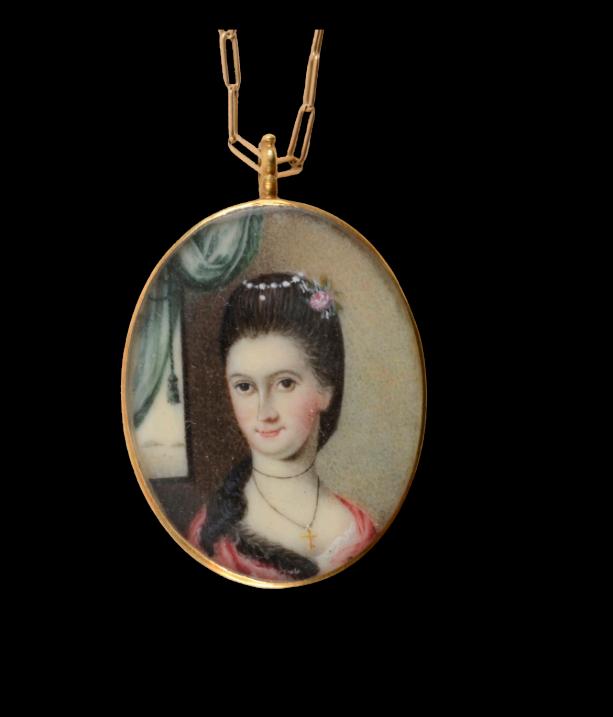
In the 18th century, women did not have equal voice to men, but they were unique poised to influence politics and help shap direction of the American War for Indepe The challenges women faced, the choices made, the costs they bore, and their contributions whether direct or indire helped shape the character of this pivota moment in American history From the Daughters of Liberty boycotting British g spinning homespun fabric or Loyalist wo standing in support of the King, Rhode Is women exercised their voices to support cause while maintaining the boundaries o role in society.
The latest display at the John Brown Hou Museum, Women in Revolutionary Rhode I explores the contributions of local women in the years leading up to and during the war. Drawing from sources in the RIHS archives, the exhibit reveals a variety of women’s experiences across our state who contributed to support or oppose the American Revolution Women in Revolutionary Rhode Island also aims to illustrate how local women acted as leaders during a difficult time

MiniatureofSarahHarrisHopkinsinprofile,RHiX171631
Using houseware items from the RIHS collection, such as 18th-century pewter, historic cups, a footwarmer, and other serving pieces alongside informative panels and reproduction visuals, the exhibit helps to shed light on the influence women had on their world
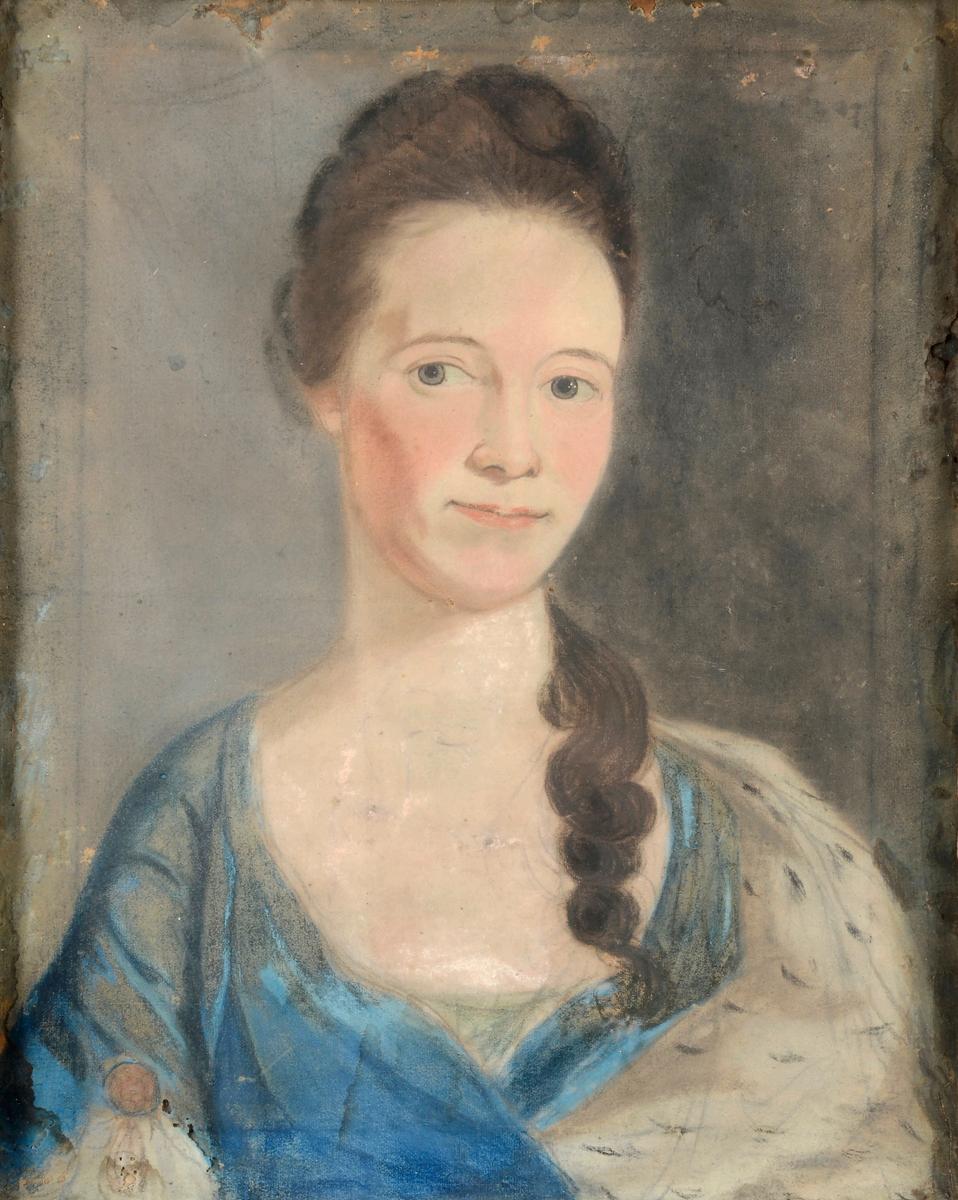
Portrait of Anne Cooke (ca. 1770-1775),
Along with the houseware items, several objects from the textile collection, such as a woman’s shoe and an embroidered child’s pocket, are on display. A small hands-on corner features two reproduction garments -– a child’s gown and a lady’s cap. These items were handsewn using historical techniques by Met School intern Christian Wolanski over the last academic year.
Women in Revolutionary Rhode Island also features a rarely exhibited portrait of Martha Washington by Rhode Island artist Jane Stuart, who made a career of copying the portraits made by her father, Gilbert Stuart
Members are encouraged to visit the gallery for themselves to learn more in the lead up to America 250 next year. Women in Revolutionary Rhode Island will be on display through Spring 2026.
GENEROUS SPONSORS

MR. & DR. BARRY & KATHLEEN HITTNER


